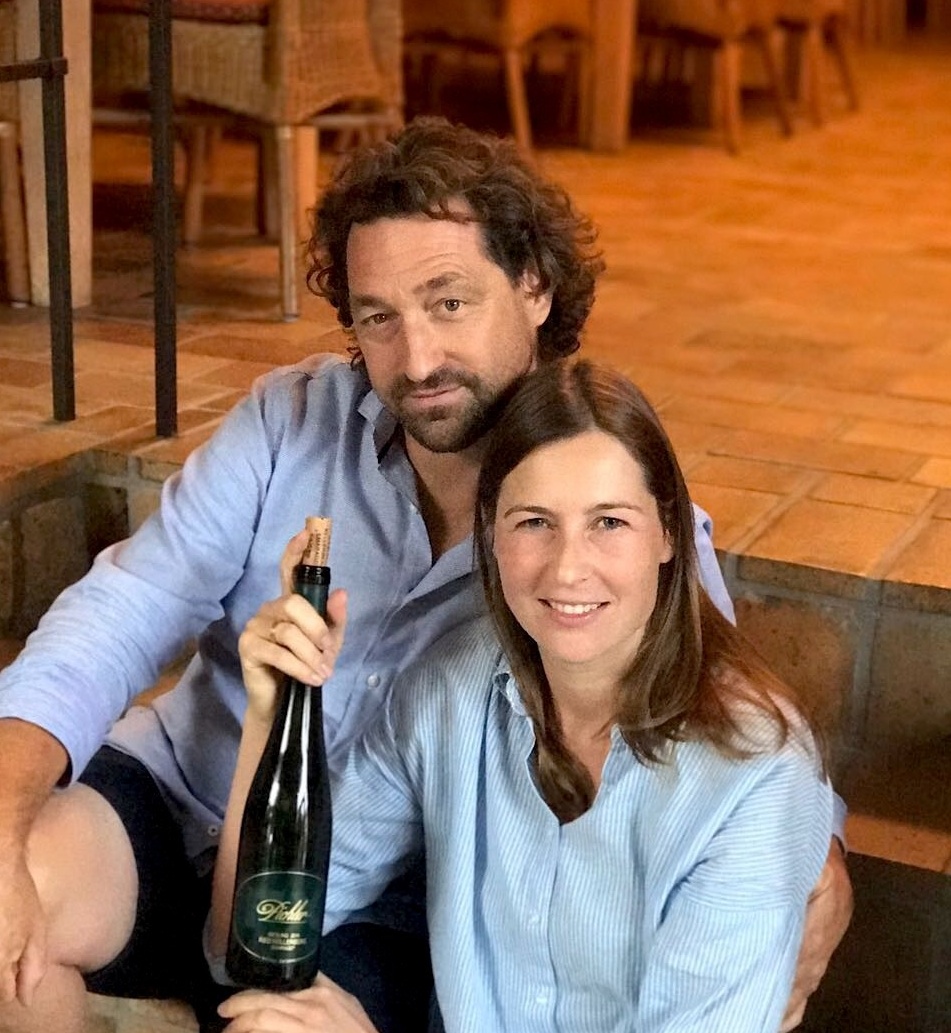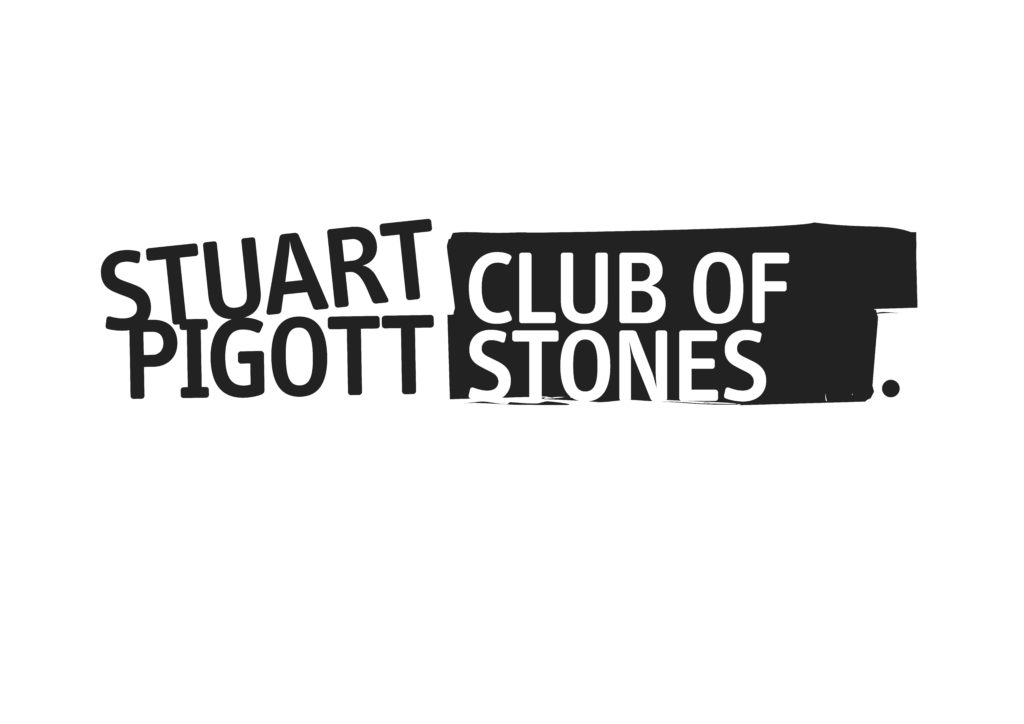
At 10:29am this morning it became clear that the story I was planning to post here will have to wait for another day. That’s when the Wine + Partners press release announcing the resignation of Weingut F.X.Pichler in Oberloiben from the Vinea Wachau wine producers association they co-founded in 1983 landed in my email and the shit hit the fan.
The determination of winemaker Lucas Pichler (pictured above with his wife Johanna) to focus on place of origin and the character deriving from it, aka terroir, as the defining feature of his wines lead to a fundamental disagreement with Vinea Wachau and this radical step. The situation demands immediate explanation, because I think it represents a change of direction for the region no less important than that of 1983.
37 years ago the Wachau producers acted to protect the integrity and reputation of their region. There was also the pressing need to give consumers clear orientation to increase their confidence in the wines’ authenticity. For all these reasons three patented designations for exclusive use by Vinea Wachau’s members were introduced: Steinfeder (light-bodied dry wines); Federspiel (medium-bodied dry wines); Smaragd (full-bodied dry wines). Since then, those names have been learned by sommeliers and wine lovers right around Planet Wine.
Simultaneously, chaptalization – the addition of sugar to must and/or fermenting wine to increase the alcoholic content – was banned for all wines bearing these designations. Here, I must point out that back in the Wachau of the 1980s it often wasn’t possible to pick grapes with 13% potential alcohol, in fact, in some vintages even 12% natural alcohol was rare!
These principals, along with the leading producers’ uncompromising pursuit of quality, were the foundations upon which the modern reputation of the Wachau was built.
No less important a date for me was my first visit to Weingut F.X. Pichler on the 23rd November 1988, because this was my personal Wachau revelation. Later, in the Wachau & Krems chapter of the German-language book Wein Spricht Deutsch (2007, Scherz Verlag), I described this experience:
Not so long ago in a vine-clothed river valley not so far away, when the steep and rocky hillsides were dusted with snow, a wonder occurred. In a narrow alley in an ancient village close to the river bank the wooden gateway to house Nr. 27 opened and I entered the simple courtyard.
“The Heurigen is closed today,” the wiry winegrower said to me dryly and I wondered if I would get the chance to taste his wines. Then he invited me to follow him down a steep stone staircase. In the dim light of the cellar between large old wooden barrels his deeply furrowed face spoke of enormous determination. With a glass pipette, the form of which spoke of an earlier century, he carefully drew a sample of white wine from one of the barrels, then presented me with some of the wine in a tall-stemmed wine glass.
“Riesling Ried Steinertal” he said in a professional tone. The wine had an incredibly subtle bouquet and tasted as clear as a bell; an image of ferns surrounding a waterfall popped into my mind. “Riesling Ried Oberhauser” quickly followed, and this second wine was much richer with a seductive apricot aroma.
“Riesling Ried Kellerberg” rang out and I stretched out my glass for some of the wine. The Kellerberg totally amazed me with its immense power and every bit as much finesse – tension like that in the spring of a fully-wound chronometer!
As you can see from this true fairy tale, terroir and the striving for truly exceptional quality were the twin obsessions of Franz Xaver Pichler. The wines he made during those years redefined what dry Riesling could be and established new benchmarks for those wines. It was really exciting to follow all that during my frequent visits to the region and I often purchased small quantities of wine for my cellar. I still have bottles of Kellerberg Riesling from F.X.Pichler going back to 1994. Of course, I wasn’t the only one who was excited, and their reputation grew during those years in leaps and bounds. Sometimes there was literally a queue outside that gate waiting to buy wine!
By the time the 1994 Kellerberg Riesling was released every wine expert, along with everyone who thought they were a wine expert, had an opinion about the F.X. Pichler wines. Some preferred the Steinertal Riesling or the Loibenberg to the Kellerberg, while others were obsessed with one or other of their Grüner Veltliners. This was understandable because they all tasted so strikingly different, and wine drinkers’ personal preferences differ too. However, it wasn’t difficult to find naysayers who would tell you the F.X. Pichler wines were totally overrated. Franz Xaver and his wife Rudolfine relished the controversy, knowing that it only made them better known.
During the late 1990s Lucas Pichler became ever more closely involved in the family estate and it wasn’t long before he had to suffer those determined to tell the story of how the son wasn’t as great a winemaker as his father. It was all bullshit and many fans rushed to Lucas’ defense. Roughly ten years later the situation repeated itself when the modernistic new F.X. Pichler cellar was built. Now, Lucas really is in the spotlight.
The root of the current situation lies in the painful truth that the world has changed. The new climatic situation means there’s no longer any problem harvesting grapes with 13% or more potential alcohol in the Wachau. You just wait a bit longer before picking. Additionally, within the German-speaking wine world the focus has shifted completely away from grape sugar content as the defining principal of wine quality to place of origin. This is also usually divided into three categories: region; village; single-vineyard.
Here I’m thinking particularly of the German designation GG or Großes Gewächs for dry single-vineyard wines at the top of the VDP classification, and the Austrian equivalents EL or Erste Lage for dry single-vineyard wines at the pinnacle of the Österreichische Traditionsweingüter classification. Both are translations of the French Grand Cru and function as such in the marketplace; a hard fact that can’t be ignored without peril.
The introduction in the Wachau of the DAC regulations with the 2020 vintage – Austria’s version of France’s appellation d’origine contrôlée laws that focus on “classic” grape varieties and place of origin – brought things to a head. For Lucas Pichler, “the introduction of the DAC designations would have been the right moment for a modernization of the Vinea Wachau regulations, for example, by limiting the Smaragd designation to the top sites, or doing away with the three Wahau categories that climate change has made obsolete.” None of this happened, and with the support and his wife and parents, Lucas has taken the decision to stick his neck out. I suggest the sensational quality of his dry single-vineyard dry wines from the 2019 vintage is a strong argument in favor of his decision.

